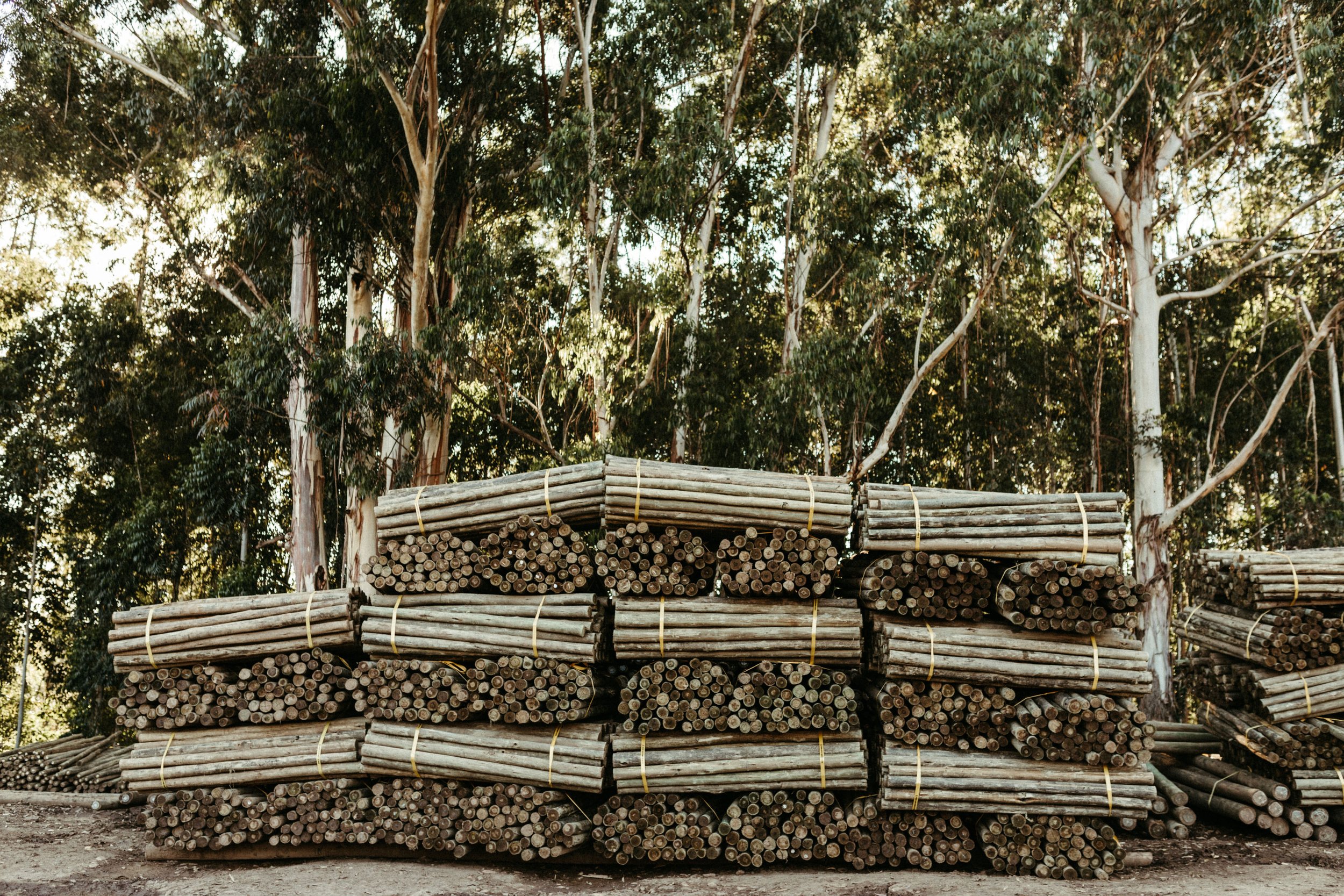
WOODEN POLES
THE BENEFITS OF WOODEN POLES
Wooden Poles such as hardwood gum poles are farmed, harvested & processed to be used in various applications. Some of these applications are for building and fencing. Treated Wooden Poles are widely used as utility poles or transmission poles, to support overhead power lines and various other public utilities, such as cable, fibre optic cable, and related equipment such as transformers and street lights. It can be referred to as a transmission pole, telephone pole, telecommunication pole, power pole, hydro pole, telegraph pole, or telegraph post, depending on its application. Below are the 10 benefits of wooden poles (courtesy of Scan Pole) which make wooden poles so versatile.
Wooden Poles with the HardPole branded yellow tag
1. Storage and transportation benefits
Wooden poles have lower transportation and storage costs. When stacked properly, wooden poles need less than half the storage space of steel or concrete poles. Wood also withstands handling and surface damage well. On the other hand the galvanized coating of a steel pole is very thin and can be easy damaged. Concrete poles don't bear hits or handling well either. Wooden poles don't need any special packaging for transportation. Wood is light and tough, which means that it is easily to haul even in rugged terrains.
2. Line and foundation requirements
Wood has higher working loads than steel or concrete. This means that fewer wood poles are needed per kilometre, which naturally means lower costs. They are also easy to plant directly into holes in the ground, whereas steel poles need a special concrete foundation and expensive collars or flanges to prevent corrosion.
3. Elevation at jobsite
Steel poles must be hoisted by cranes to foundations' fixing bolts. Moreover, concrete poles are also heavier and they need bigger cranes for hoisting. Unlike steel poles wooden poles don't need to be earthed because wood does not conduct electricity.
4. Machineability
It is easy to machine wooden poles according to customer's requirements for markings and pre-drilling.
5. Istallation of cables and accessories
Steel and concrete poles require special attachments for accessories. No special tools are needed for wooden poles because installation is made simply by screws and bolts. Even "A" and "H" models are easily constructed on site and workers also find it easy to climb up wooden poles.
6. Electrical properties of wood
Wood has good insulating properties and is therefore a safer material than steel or concrete. Wooden poles don't require earthing and wood can diminish electric breakdowns and power arcs commonly caused by lightning.
7. Fire resistance of wood
Creosote-coated poles withstand bush fires without any serious loss of strength. Bush fires usually cause only mild charring to the surface of the poles. Bush fires cause more damage to steel poles. Fires destroy the steel pole's galvanization leaving it prone to rapid corrosion and collapse.
8. Service life
Wooden poles have a service life of 40-80 years, depending on climate conditions and the pole's individual properties. The service life of a steel pole is 35-50 and it's heavily affected by corrosion which is triggered by: Acid or saline soil or climate Scraping, denting, fire Sand, snow or dirt blown by the wind Similarly, the service life of concrete poles depends heavily on climate erosion and the quality of the concrete.
9. Removal and re-use
Wooden poles are easy to remove and re-use. Steel poles may be re-used only after a treatment in a workshop. Re-use of concrete poles is even more complicated.
10. Environmentally friendly
Our poles come from sustainably managed forests. No other pole material comes from a renewable source. Wooden poles are also easy to recycle. R&B Group specializes in the manufacturing, large scale order and export of utility poles throughout Africa, and globally. Our easy access to the harbors of the South African East coast make shipping them to any destination simple.
CHOOSE A TREATED WOODEN POLE
Our SABS approved, quality treated wooden poles are used for many applications in the agricultural and building sectors.
Quality Treated
Our wooden poles are treated with either CCA or Creosote and can be supplied in varying grades, lengths and diameters, depending on what the market requires.
SABS Approved
All wooden poles are produced according to the SABS specification which may include:
Gangnailing
Drilling
Labelling
Colour coding
Fencing Poles
Our wooden fencing poles can be used in various fencing applications:
Game fencing
Livestock fencing
Security fencing
Building Poles
Our wooden building poles can be used in building and agriculture:
Vineyard trellising
Citrus trellising
Thatching
Playgrounds
Construction
Find out about our Treated Wooden Poles

